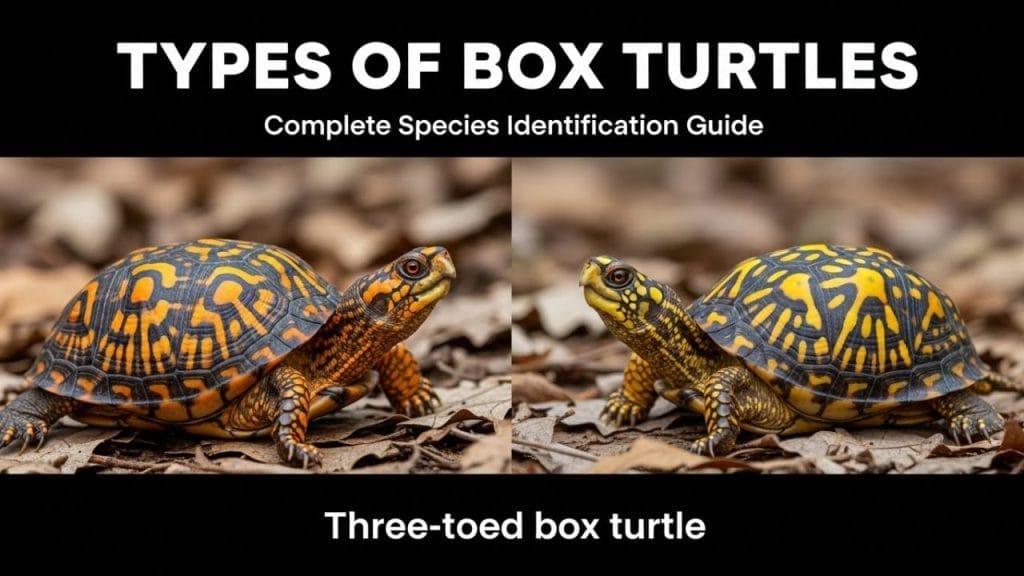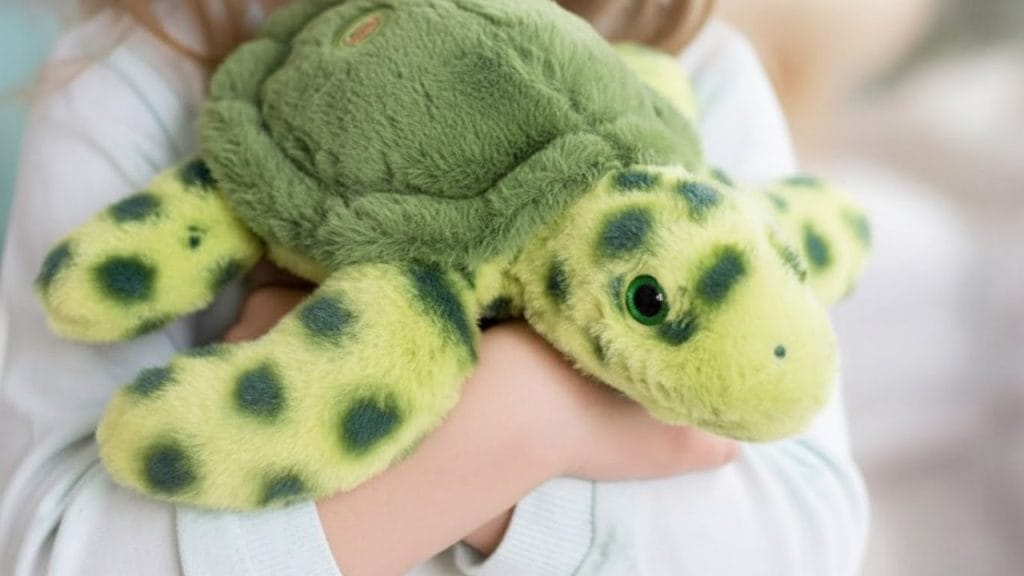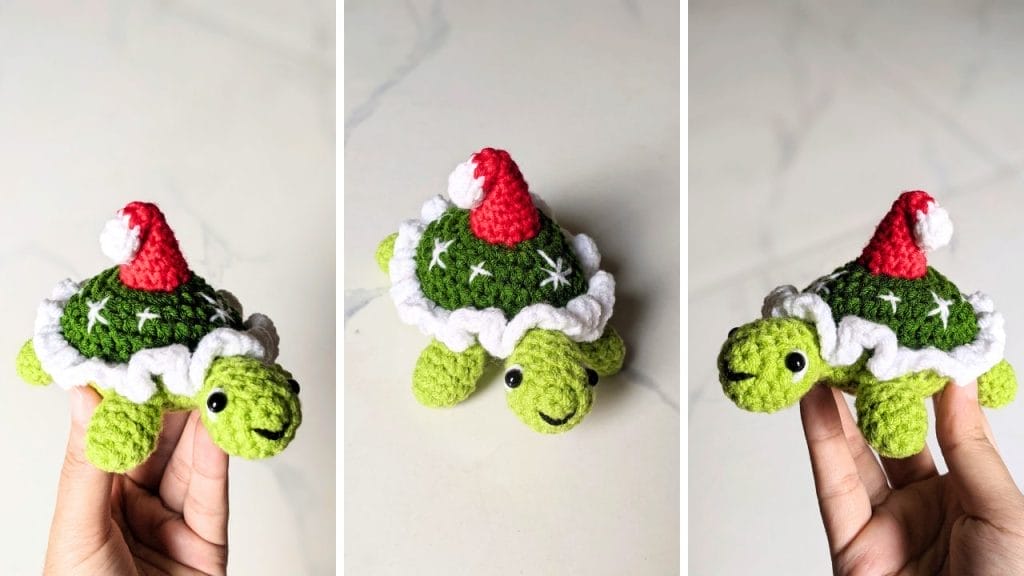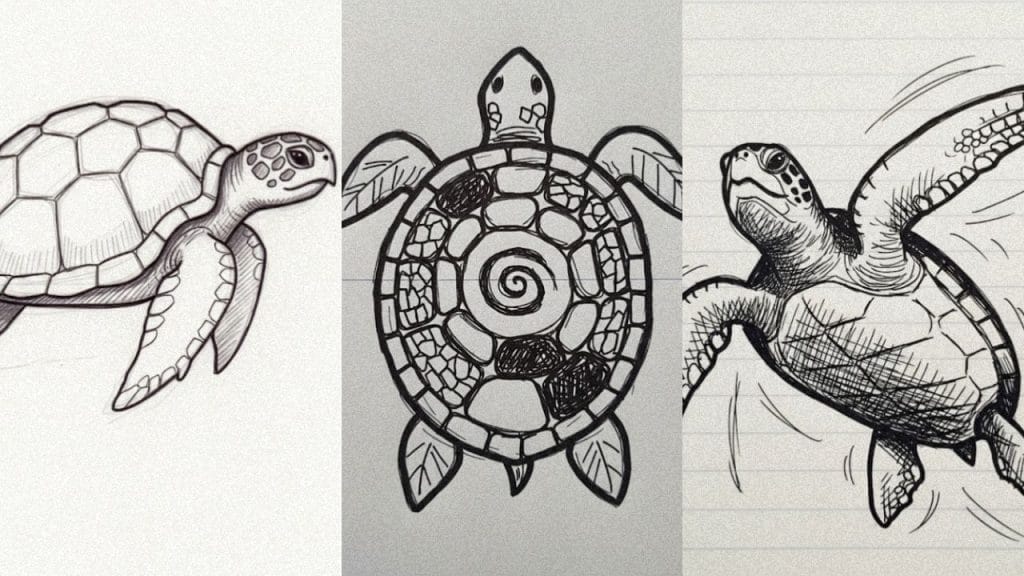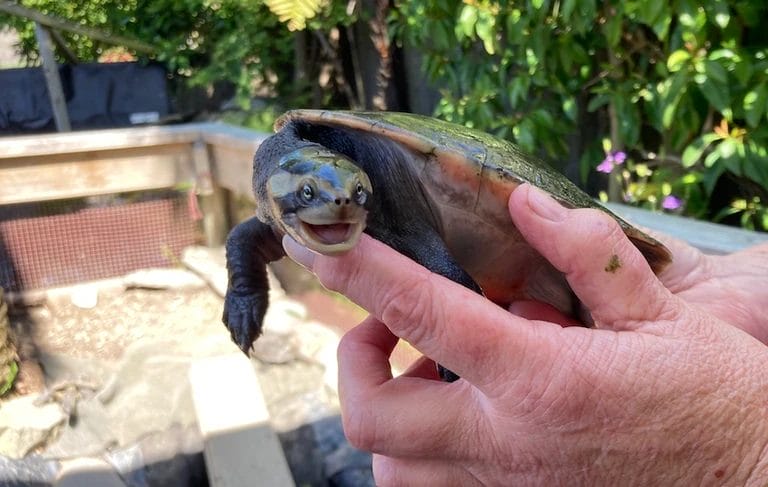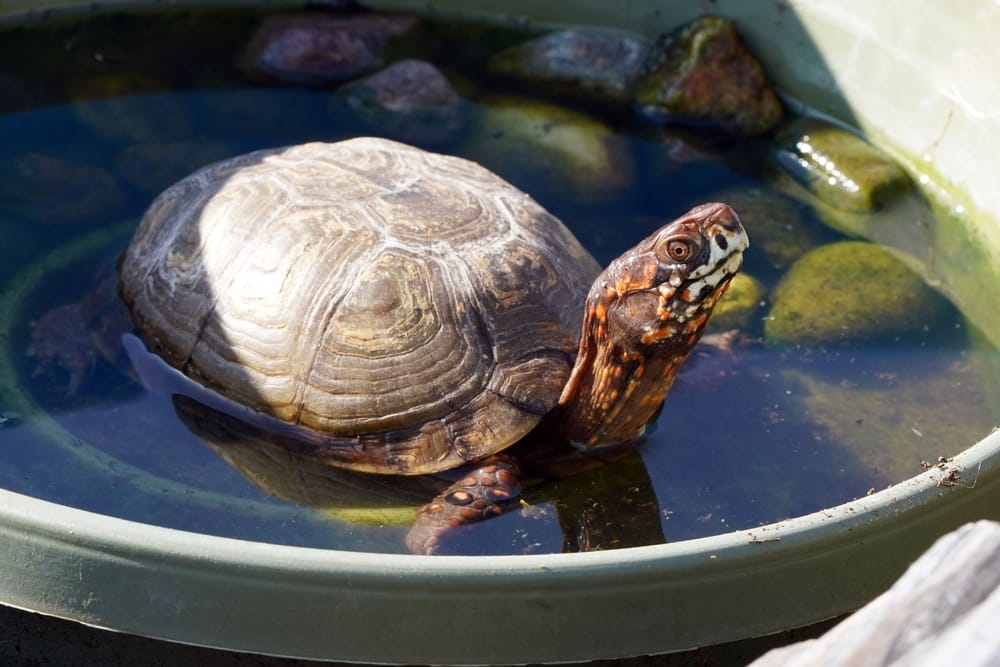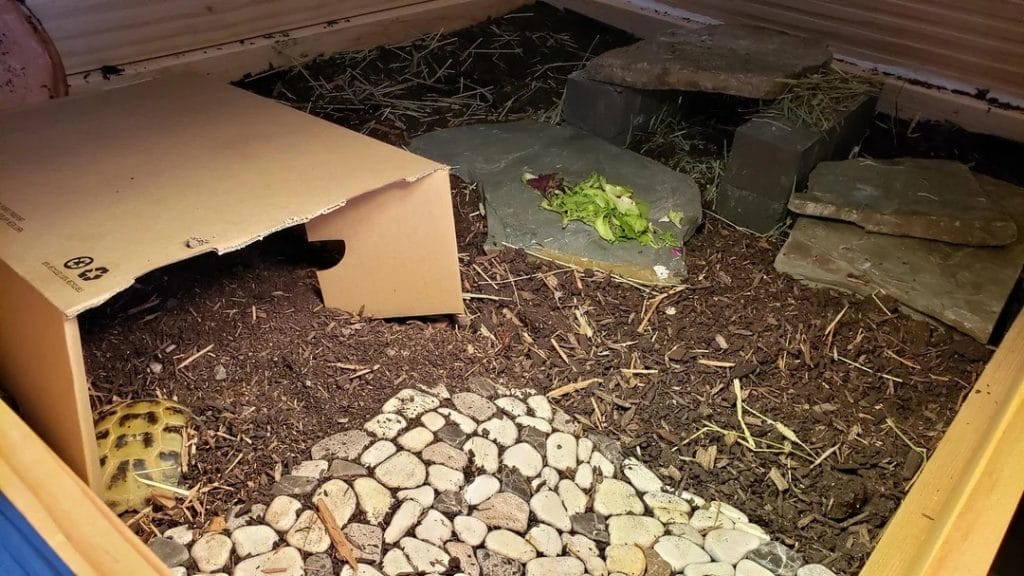How To Take Care Of Musk Turtle? [Honest Care Guide]

This post was created with help from AI tools and carefully reviewed by a human (Muntaseer Rahman). For more on how we use AI on this site, check out our Editorial Policy.
Look, I’m going to level with you right from the start.
Musk turtles are those weird little pets that everyone underestimates until they actually get one. They’re small, they’re grumpy, and they smell like a teenager’s gym locker when they’re scared (hence the charming nickname “stinkpot”).
But honestly? They’re fantastic pets if you know what you’re doing.
I’ve been keeping these little stink bombs for years now, and I’ve made just about every mistake in the book. Bought the wrong tank size.
Used tap water straight from the faucet like an amateur. Even skipped the UV light at first because “they’re mostly aquatic anyway, right?”
Wrong. So wrong.
Here’s everything I wish someone had told me before I brought home my first musk turtle.
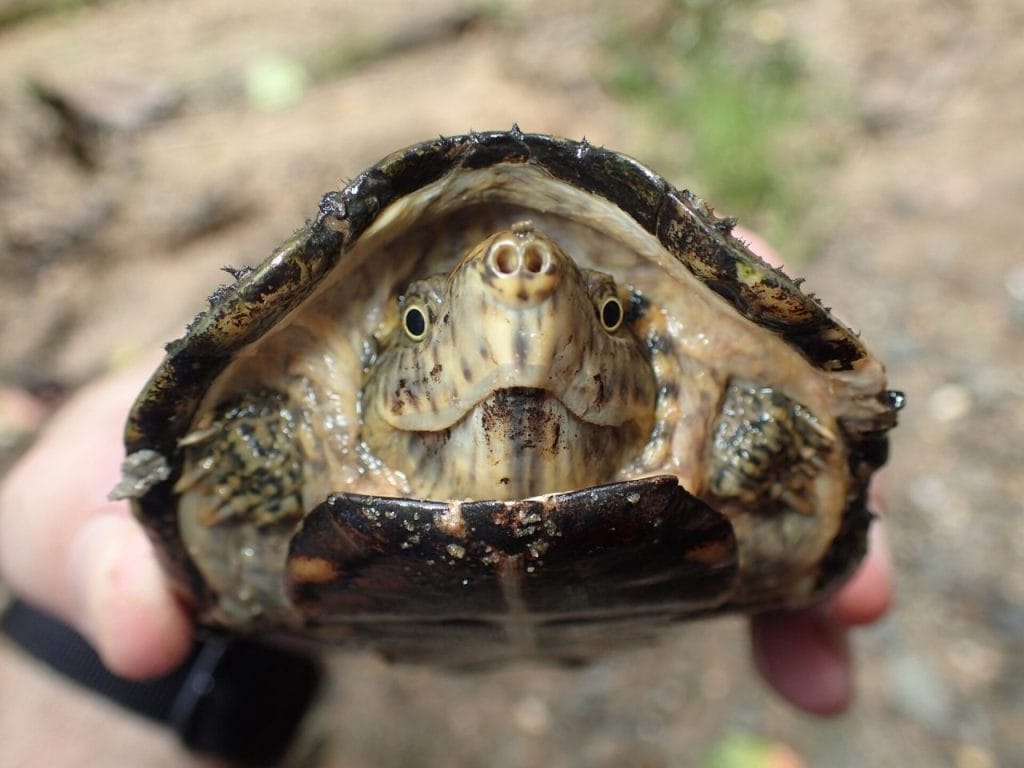
What Even Is A Musk Turtle?
Musk turtles (Sternotherus odoratus) are small freshwater turtles native to eastern North America.
Most people only know about the common musk turtle, but there are actually 7 different subspecies hanging out across the United States and parts of Canada.
We’re talking razorbacks, loggerheads, flatteneds, and even a giant Mexican variety that hits 15 inches (though good luck finding one of those at your local pet store).
The common musk turtle is the one you’ll see most often, and honestly, it’s the best starter option anyway.
For comparison, check out our painted turtle care guide or red-eared slider guide, which cover more beginner-appropriate species.
Why They’re Called Stinkpots
Here’s the fun part that nobody warns you about properly.
When a musk turtle feels threatened, it releases this absolutely foul-smelling musk from glands near its shell. It’s their defense mechanism, and it works. The smell is like rotting eggs mixed with bad decisions.
The good news? They rarely do this once they’re comfortable with you. My oldest musk turtle hasn’t hit me with the stink spray in over three years.
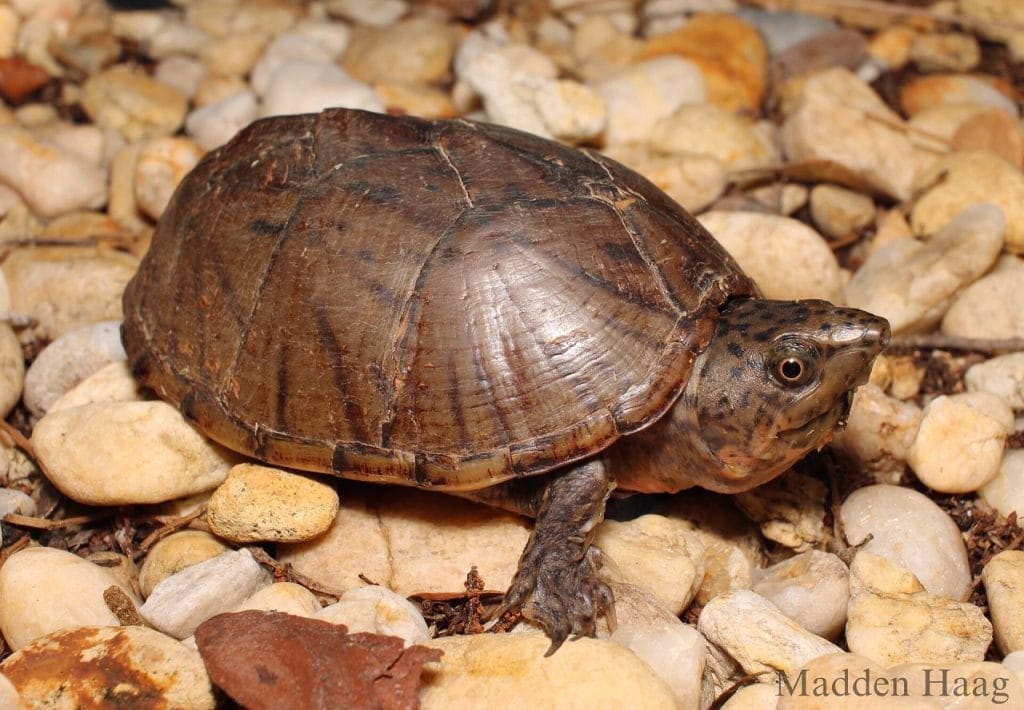
What Do Musk Turtles Look Like?
Picture a tiny, dark brown or black turtle with a domed shell that looks like it’s been polished with mud.
Young musk turtles have this cool vertebral keel running down the middle of their shell (like a tiny mohawk made of bumps), but it flattens out as they age. They’ve also got two yellow stripes running from their nose to their neck, which fade over time like my enthusiasm for morning jogs.
The weirdest feature? Those little fleshy barbels under their chin that look like tiny catfish whiskers. Scientists think they use these for sensing food in murky water, which makes sense considering musk turtles are basically the bottom-feeders of the turtle world.
Their plastron (belly shell) is small and flat, which helps them squeeze into tight spaces underwater.
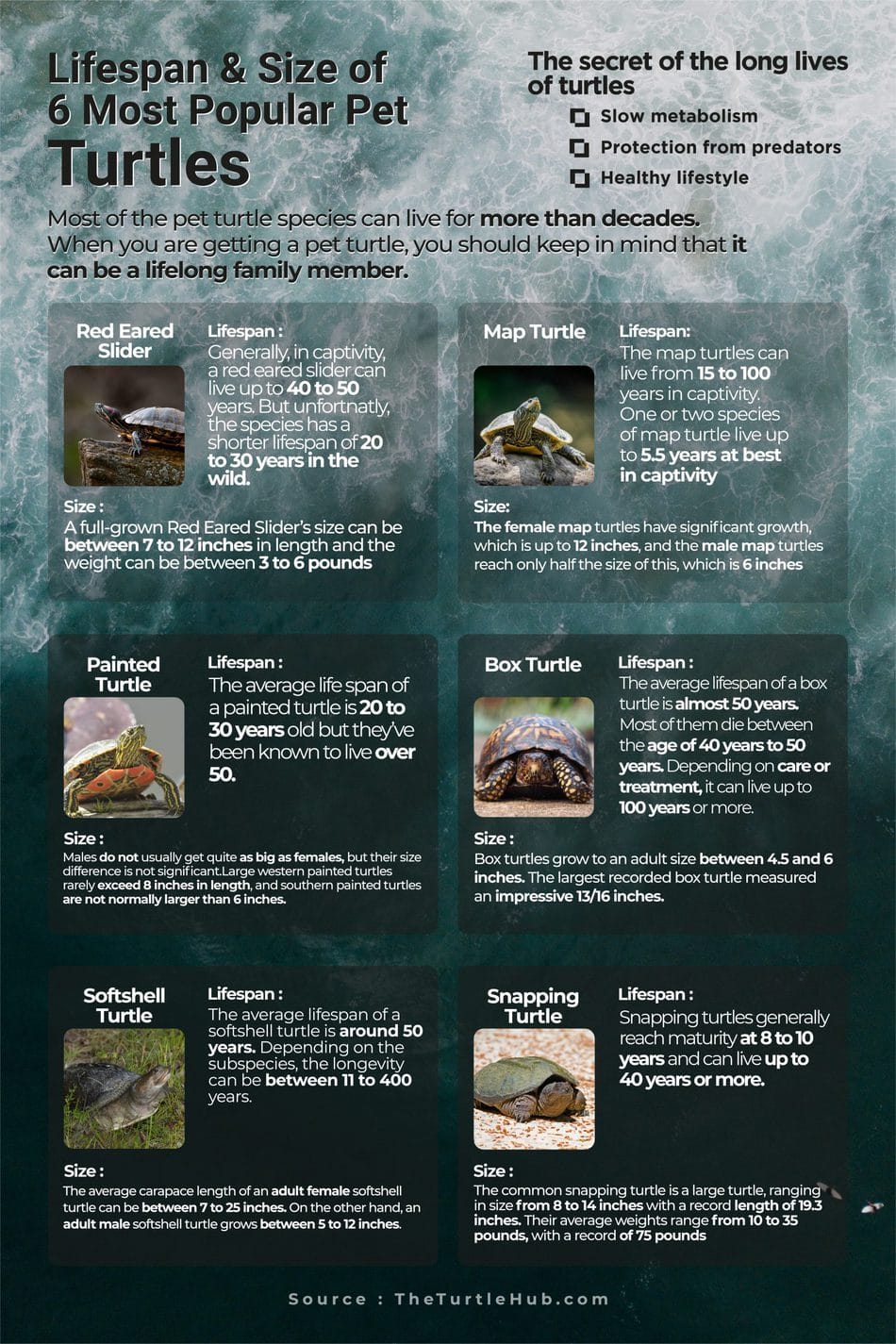
This Hilarious Turtle Book Might Know Your Pet Better Than You Do
Let’s be real—most turtle care guides feel like reading a textbook written by a sleep-deprived zookeeper.
This one’s not that.
Told from the snarky point of view of a grumpy, judgmental turtle, 21 Turtle Truths You’ll Never Read in a Care Guide is packed with sarcasm, sass, and surprisingly useful insights.
And hey—you don’t have to commit to the whole thing just yet.
Grab 2 free truths from the ebook and get a taste of what your turtle really thinks about your setup, your food choices, and that weird plastic palm tree.
It’s funny, it’s honest, and if you’ve ever owned a turtle who glares at you like you’re the problem—you’ll feel seen.
How Big Do Musk Turtles Get?
Most musk turtles max out between 2 to 5.5 inches.
That’s it. They’re basically forever babies compared to monsters like red-eared sliders that can hit 12 inches.
Here’s a quick size breakdown of different subspecies:
| Subspecies | Average Size |
|---|---|
| Common Musk Turtle | 2-5.5 inches |
| Mexican Giant Musk | 14-15 inches |
| Chiapas Giant Musk | 6-7 inches |
| Stripe Neck Musk | 3-4 inches |
| Razorback Musk | 5-6 inches |
| Loggerhead Musk | 3-6 inches |
| Flattened Musk | 3-4 inches |
The small size is actually one of the best things about musk turtles. You don’t need a swimming pool in your living room to keep them happy.
How Long Do Musk Turtles Live?
Buckle up for this one: 30 to 60 years for common musk turtles.
Yeah, you read that right. That cute little stinkpot you’re thinking about buying might outlive your marriage, your career, and possibly your knees.
Other subspecies vary a bit (narrow-bridged musk turtles only live about 15 years, while flattened musk turtles can hit 60), but the point stands. This is a serious long-term commitment.
I’ve had people ask me if musk turtles are good “starter pets” for kids, and I always cringe. Unless you’re prepared to still be feeding this turtle when your kid is in grad school, maybe reconsider.
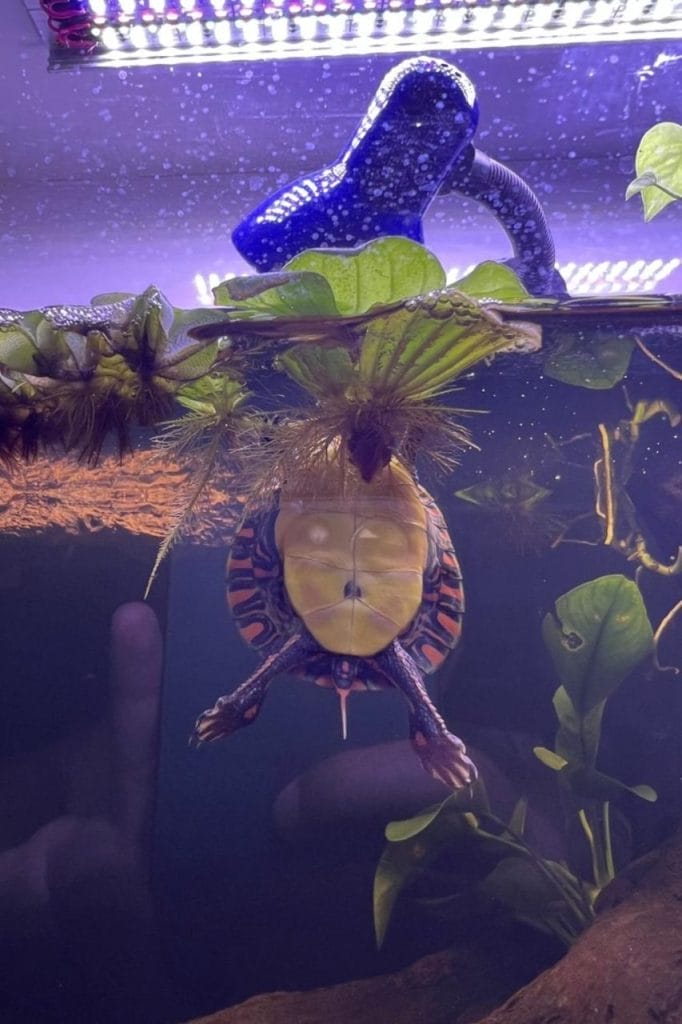
Setting Up The Perfect Musk Turtle Tank
This is where most people screw up, myself included on my first attempt.
You need a minimum 30-gallon tank for one adult musk turtle. Not 20 gallons. Not “I’ll upgrade later.” Thirty gallons, period.
Baby musk turtles can start in a 15-20 gallon setup, but you’ll need to upgrade within their first year or two.
Why Tank Size Matters More Than You Think
Musk turtles are territorial little demons. They need space to establish their zone, even if they spend most of their time in one corner looking grumpy.
Plus, you’re going to be cramming in filters, heaters, a basking platform, and decorations. In a small tank, your turtle ends up with about six square inches of actual swimming space, which is like living in a closet.
If you’re keeping two musk turtles, you need at least a 40-gallon tank, and even then, watch for aggression.
Essential Equipment For Musk Turtle Care
Let me break down the non-negotiable stuff you absolutely need.

Basking Platform
Yes, musk turtles need a basking spot, even though they’re almost entirely aquatic.
I know what you’re thinking: “But they barely use it!” Doesn’t matter. They need the option. Without a dry area to rest on, musk turtles are way more likely to develop respiratory infections and shell rot.
The trick with musk turtles is that they’re lazy baskers. They’ll often just float near the surface or rest on a submerged log rather than climbing all the way out. Set up your basking area so it’s easy to access with a gentle ramp.
Commercial docks work fine, but I’ve had good luck with flat rocks and pieces of driftwood arranged so they’re partially submerged.
UV Lighting (Yes, Really)
Here’s where I messed up initially: I skipped the UV light because I read somewhere that musk turtles “don’t need it as much as other species.”
That’s garbage advice.
UVB lighting is absolutely necessary for musk turtles to produce vitamin D3, which they need to absorb calcium properly. Without it, you’re looking at metabolic bone disease, shell deformities, and a very unhappy turtle.
Get a 5% UVB bulb and position it about 18 inches above the basking area. Replace it every 10-12 months even if it still looks fine, because UV output degrades over time.
UVA is less critical but still beneficial for mood and activity levels. Most quality reptile bulbs provide both.

Heating Lamp
Musk turtles are cold-blooded, which means they can’t regulate their own body temperature.
You need a heating lamp over the basking area to create a warm spot between 90-100°F. The wattage depends on your setup (usually 50-100 watts), but aim for that temperature range measured with an actual thermometer, not a guess.
Without proper heat, your turtle’s metabolism slows down. They stop eating, stop moving, and basically turn into a decorative rock with health problems.
Water Filter
This is non-negotiable unless you enjoy doing water changes every other day.
Musk turtles are messy. They poop in the water. They shred their food in the water. They basically turn clean water into a science experiment faster than you can say “what’s that smell?”
Get a high-quality canister filter rated for at least twice your tank’s volume. So if you’ve got a 30-gallon tank, get a filter meant for 60 gallons.

I use canister filters because they provide mechanical, chemical, and biological filtration all at once. Hang-on-back filters work in a pinch, but they struggle with the bioload turtles create.
Water Heater
Your tank water should stay between 72-78°F year-round.
Get a submersible aquarium heater appropriate for your tank size:
- 20 gallons = 75 watts
- 30 gallons = 100 watts
- 40 gallons = 150 watts
Set it and forget it, but do check with a thermometer occasionally to make sure it’s actually working.
Water Depth And Quality
Musk turtles are bottom dwellers, which means they walk along the tank floor more than they swim.
The ideal water depth for adults is 18-24 inches. Some guides say 10 inches is fine, and it is, but deeper water is actually preferred once they’re acclimated.
For hatchlings, start with 3-5 inches and gradually increase as they grow.
Water Quality Actually Matters
Tap water contains chlorine, chloramine, and sometimes heavy metals that can irritate your turtle’s eyes and skin.
Always use a water conditioner to neutralize these chemicals before adding fresh water to the tank.
Beyond that, you should be doing 25% water changes weekly and scrubbing the tank monthly. Yes, even with a good filter. The filter handles biological waste, but you still need to physically remove crud.
Temperature And Humidity Requirements
Let’s talk numbers:
- Water temperature: 72-78°F
- Basking spot: 90-100°F
- Air temperature: Mid-80s°F
- Humidity: 30-40%
The humidity usually takes care of itself with the water in the tank, but if you live in a super dry climate, you might need to monitor it.
Get yourself a couple of thermometers (one for water, one for the basking area) and actually check them. “It feels warm enough” is not a temperature measurement.
Winter temperature management is crucial for all turtles—learn more in our guide on taking care of baby turtles in winter, which covers cold-weather challenges in detail.

Substrate: To Gravel Or Not To Gravel?
Controversial opinion: skip the substrate entirely.
Bare-bottom tanks are way easier to clean, and there’s zero risk of your turtle eating gravel and getting impacted. Musk turtles are curious idiots and will absolutely try to eat colorful pebbles.
If you really want substrate for aesthetic reasons, use large river rocks that are too big to swallow. But honestly? Save yourself the headache and go bare.
What Do Musk Turtles Eat?
Here’s where it gets fun: musk turtles are basically opportunistic carnivores pretending to be omnivores.
In the wild, they eat snails, insects, small fish, worms, and whatever else they can catch while crawling along the bottom. They’ll also munch on aquatic plants occasionally, but protein is their jam.
The Ideal Diet Breakdown
Aim for roughly 80% protein and 20% vegetation.
Protein options:
- Bloodworms
- Earthworms
- Crickets
- Mealworms
- Small fish or fish pieces
- Shrimp
- Snails
- High-quality turtle pellets
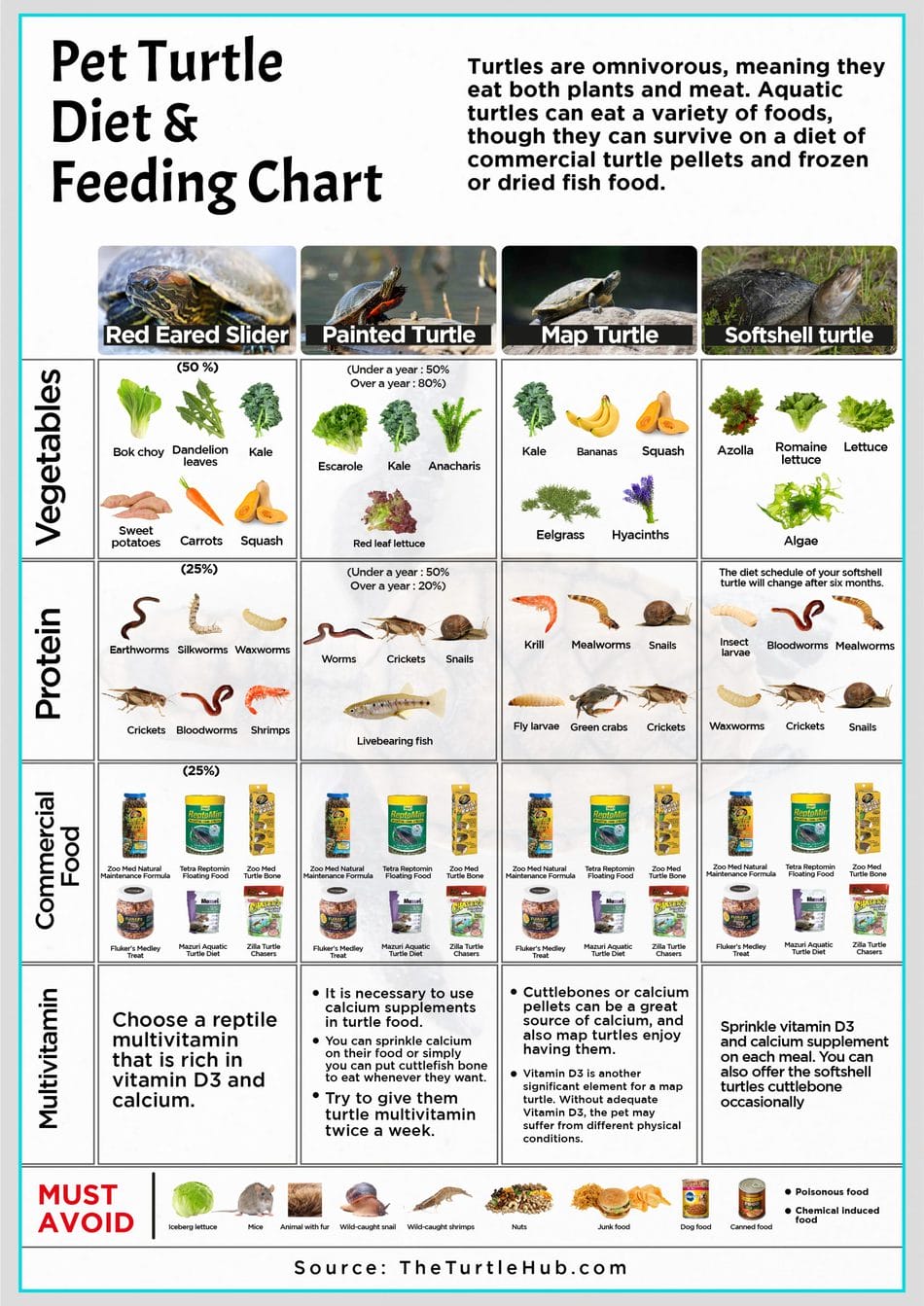
Plant options:
- Dandelion greens
- Collard greens
- Kale
- Duckweed
- Elodea
Avoid iceberg lettuce (it’s basically crunchy water with zero nutrition) and any processed human food. No, your turtle doesn’t need to try pizza.
Foods To Avoid
Some stuff is straight-up bad for musk turtles:
- Spinach (blocks calcium absorption)
- Avocado (toxic)
- Processed foods
- Dairy products
- Dog or cat food
- Wild-caught insects (pesticide risk)
Also skip vegetables like carrots, celery, and tomatoes as primary foods. They’re not toxic, but they’re not nutritionally appropriate either.
How Often Should You Feed Musk Turtles?
This changes as they age, and getting it wrong leads to obesity (yes, fat turtles are a real problem).
Hatchlings (0-6 months): Feed daily. They’re growing like crazy and need the calories.
Juveniles (6 months – 2 years): Every other day works great. You can split it into daily smaller portions if you prefer.
Adults (2+ years): Two to three times per week is plenty. They’re not growing anymore, so they don’t need constant food.
How Much To Feed
Use the 15-minute rule: Put food in the tank and remove whatever’s left after 15 minutes.
Alternatively, feed an amount roughly equal to the size of your turtle’s head. It’s a weird measurement, but it works.
Overfeeding causes shell pyramiding, liver disease, and a turtle that’s too fat to fully retract into its shell. None of those are good.
Common Health Problems
Even with perfect care, stuff happens.

Metabolic Bone Disease (MBD)
This is what happens when turtles don’t get enough calcium or UVB lighting.
Symptoms include soft shells, swollen limbs, lethargy, and difficulty moving. It’s brutal to watch and often causes permanent damage if not caught early.
Prevention is simple: proper UVB lighting and a calcium-rich diet with supplements.
Respiratory Infections
Signs include wheezing, mucus around the nostrils, open-mouth breathing, and excessive basking.
Respiratory infections usually come from water that’s too cold or poor water quality. They need antibiotic treatment from a vet—not home remedies you found on Reddit.
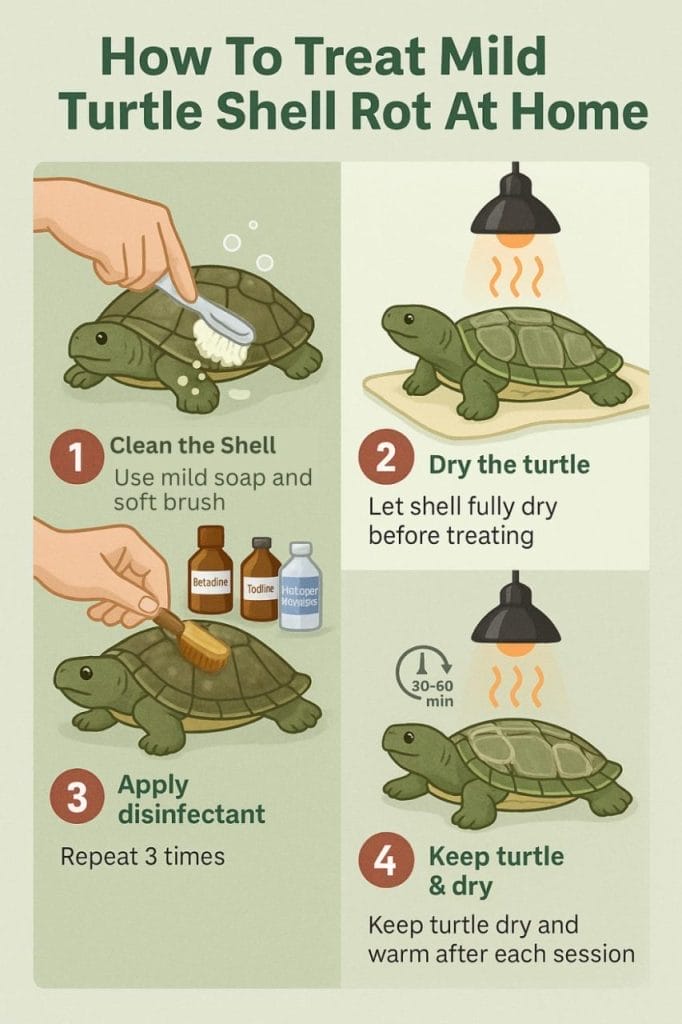
Shell Rot
Shell rot shows up as white patches, soft spots, or a foul smell coming from the shell.
It’s caused by bacterial or fungal infections, usually from dirty water. Clean the affected area, improve water quality, and see a vet if it doesn’t improve quickly.
Vitamin A Deficiency
This causes swollen eyes, lethargy, and loss of appetite.
The fix is a vitamin A-rich diet (dark leafy greens, occasional liver treats) and sometimes vitamin A injections from a vet.
Behavior And Temperament
Let me be real with you: musk turtles are not cuddly pets.
They tolerate handling at best and will absolutely bite you at worst. Their bite isn’t horrible (they don’t have teeth), but their sharp jaws can break skin and leave a nasty bruise.
The key is respecting their space. They’re shy, solitary creatures that stress easily with too much interaction.
Are They Actually Aggressive?
Not aggressive, just defensive.
If you leave them alone most of the time and handle them gently when necessary, they’ll calm down. My oldest musk turtle went from snapping at everything to being relatively chill during water changes.
It took about two years, but still.
Can You Keep Multiple Musk Turtles Together?
Short answer: maybe, but probably not worth the stress.
Male musk turtles will fight each other, especially in smaller tanks. Females might tolerate each other, but there’s always a risk of aggression.
If you’re dead set on keeping multiple turtles together, your best bet is:
- Two females (never two males)
- A tank of at least 40 gallons
- Multiple basking spots and hiding places
- Close monitoring for aggression
Honestly though? One turtle per tank makes your life way easier.
Can Musk Turtles Live With Fish?
Theoretically yes, but the fish you choose matters a lot.
Fast-moving fish like zebra danios or certain tetras might survive, but slow fish or anything small enough to eat will become turtle snacks eventually.
Bottom line: if you want a community tank, musk turtles probably aren’t your best choice.
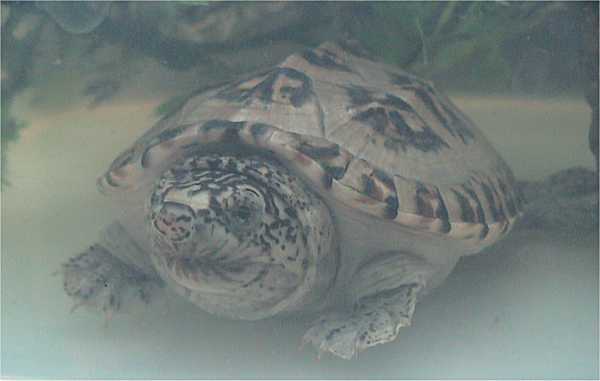
Cost Of Keeping A Musk Turtle
Let’s talk money because nobody else will.
Initial costs:
- Turtle: $20-70
- Tank: $50-150
- Filter: $50-150
- Heater: $20-40
- UV light: $30-60
- Heating lamp: $20-40
- Basking platform: $15-50
- Decorations and extras: $50-100
Total startup: $300-700 depending on how fancy you get.
Annual costs:
- Food: $100-150
- Replacement bulbs: $50-100
- Electricity: $50-100
- Vet visits (if needed): $100-300
You’re looking at around $300-400 per year to maintain a musk turtle properly.
Are Musk Turtles Good Pets?
For the right person? Absolutely.
They’re low-maintenance compared to many reptiles, they don’t need huge enclosures, and they’re weirdly entertaining to watch as they patrol the bottom of their tank like tiny grumpy submarines.
But they’re not great for:
- Young children (they bite and need decades of care)
- People who want an interactive pet
- Anyone not ready for a 30-60 year commitment
If you want a small, interesting pet that doesn’t demand constant attention and you’re okay with minimal handling, musk turtles are genuinely fantastic.
Final Thoughts
Musk turtles are weird little creatures that most people don’t fully appreciate until they’ve kept one for a few years.
They’re not flashy. They’re not friendly. They literally smell bad when they’re scared.
But they’re hardy, fascinating to observe, and surprisingly easy to care for once you’ve got the setup dialed in.
The key is doing your research before you buy, investing in proper equipment from day one, and respecting the turtle’s boundaries. Do that, and you’ll have a healthy, grumpy little companion for decades.
Just remember: if someone tells you turtle care is cheap or easy, they’re either lying or doing it wrong.
Now go set up that tank properly. Your future stinkpot deserves better than a plastic bowl and some tap water.

About Author
Muntaseer Rahman started keeping pet turtles back in 2013. He also owns the largest Turtle & Tortoise Facebook community in Bangladesh. These days he is mostly active on Facebook.


